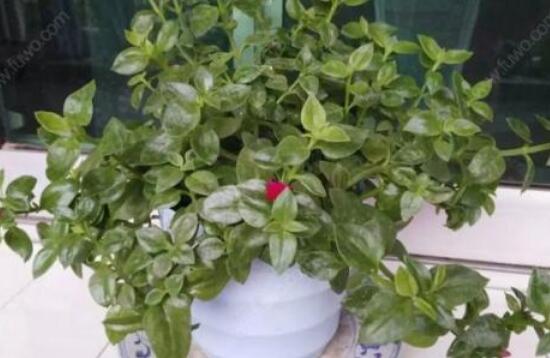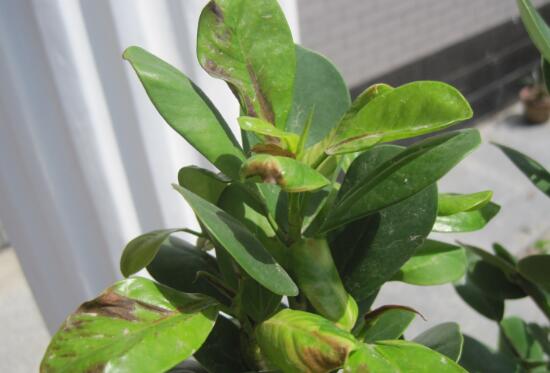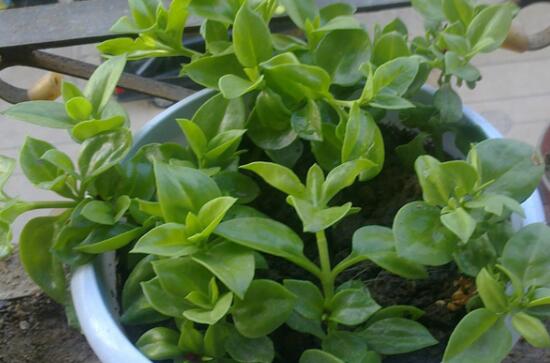Peony hanging orchid leaves yellowing how to do, suitable light / reasonable water and fertilizer / natural metabolism
Peony orchid, a kind of plant that can see both flowers and leaves, its flowers are appreciated, and its leaves can absorb formaldehyde, so the plant is naturally lovable and is kept at home by many people. But in the process of breeding, many flower friends will encounter the symptoms of leaf yellow, seriously affecting the ornamental of the plant. Then, peony hanging orchid leaves yellow how to do? In this regard, the editor summed up five reasons, flower friends who have problems must take a look.
First, peony hanging orchid leaves yellowing, looking for the cause

As a kind of hanging orchid, the breeding method of peony hanging orchid is not difficult, as long as careful maintenance, it will not have a problem. But because there are many rookies in breeding, they often have a variety of negligence in the maintenance process, resulting in the emergence of leaf yellow. As for the peony hanging orchid leaves yellowing how to do, the editor summed up five reasons, and attached solutions, we continue to look.
Second, the causes of yellowing and softening of peony orchid leaves and its solutions.
1. Environmental mutation
With regard to the causes of the yellowing of peony orchid leaves, the first thing we should consider is the environment. Nowadays, many of the peony orchids of flower friends are purchased online, which can easily lead to a large geographical span, resulting in too many changes in the environment, peony hanging orchids can not adapt for a while, resulting in leaf yellow symptoms.
Solution: very simple, ask the seller about the growth environment before the peony orchid, and then we change the environment at home until the peony orchid is fully adapted. After normal maintenance for a period of time, the leaves of peony orchid will be restored.
2. Improper lighting
Lack of ① light: in the process of growth, except for proper shade at noon in midsummer, peony orchid needs sufficient light at other times of the year. Once the light is not enough, the chlorophyll of the peony orchid leaves will decrease, and the result is that the leaves slowly turn yellow. Solution: supplement the light, but the light can not be too strong, it is better to shade more than 50%.
② light is too strong: although peony hanging orchid likes light, but avoid bright light, once it is exposed to the sun, its leaves will be burned, resulting in the symptoms of leaf yellow. Solution: move the peony orchid to the ventilated astigmatism, slow for half a day and then pour the right amount of water, and it will return to health after careful maintenance for a few days.
3. Too much watering
Peony orchids like dry environment, so they should not be watered too much. Once too much water is poured, it is easy to cause stagnant water in the basin, so the root system of the plant will have difficulty in breathing, resulting in the yellowing of peony orchid leaves.
Solution: flower friends should move the pot to a ventilated astigmatism to let the water evaporate quickly. Once there are rotten roots, you should take off the pot and cut the roots, and then change the pot soil to plant again. After a period of time, the plant will return to health.
4. Excessive fertilization
In addition to too much watering, too much fertilization will also cause the peony orchid leaves to turn yellow. The growth of peony orchid needs sufficient nutrients, and proper fertilization can make it grow better. Once more fertilizers are applied, the roots will burn, and when the roots rot, it will easily lead to yellowing of the leaves.
Solution: stop fertilizing, irrigate more water, or turn the pot to clean the root and replace the new soil.
5. Natural metabolism
If the above points can be excluded, the yellowing of peony orchid leaves may be natural metabolism. Symptoms: if the peony hanging orchid is raised for a long time, the leaves at its bottom appear yellowing. Then this may be natural withered and yellow, this is a very normal phenomenon, flower friends do not have to worry, as long as the top leaves are normal.
Generally speaking, although the peony orchid is easy to raise, it will have problems if we do not pay attention to it. However, after reading the full text, I believe you have a clear mind, the leaf yellow problem can be remedied in accordance with the above method. About the peony hanging orchid leaves yellowing and soft, the editor introduced here, hoping to bring help to everyone.
What to do with the growth of peony orchid insects? pest control of peony orchid / 3 insects and 2 diseases
As a common indoor potted plant, the efficacy of peony orchid is very strong, it is not only good-looking, but also not vulnerable to diseases and insect pests, but also has good value in edible. But in indoor farming, for some reasons, peony orchid will inevitably be infected with disease and be disturbed by insects. So, what should I do if the peony orchid grows worms? Here are five kinds of peony pest control, let's go and have a look!
First, peony hanging orchid long worm, spray with medicine
The breeding method of peony orchid is not difficult, only need to pay a little attention to water and fertilizer, and give it enough light, it can grow very well. But in the breeding process, because of the basin soil stagnant water, poor ventilation and other conditions, it will suffer diseases and insect pests. As for the peony hanging orchid worm how to do, in fact, it is very simple, indeed insect pests, and then aimed at spraying can be solved.
II. Disease and pest control of peony orchid
1. Aphids
Indoor potted plant is the most common pest, which also endangers the health of peony orchid. The insect mainly harms leaves and buds and absorbs a lot of juice, resulting in poor plant growth. Because aphids multiply, they are usually found densely packed, not only frightening, but also very disgusting.
Prevention and control methods: if the number of aphids is very small, you can take artificial aphid control, brush off the aphids with a brush and bury them in the basin soil; if there are many aphids, you need to spray related agents, such as 1000 times of omethoate or 1000 times of dichlorvos, sprayed once every 10 days and sprayed for 3 times in a row.
2. Scale insects
In addition to aphids, in the case of dense plants and poor ventilation, peony orchids are also vulnerable to scale insects. The insect will attach to the leaves and make the leaves lose their luster, resulting in the yellowing of peony orchid leaves, and in severe cases, the whole plant will die.
Control method: move the plant to a ventilated place, cut off the diseased leaves to reduce the source of insects; then spray 40% omethoate diluted into 1000 times solution or 50% malathion diluted into 1500 solution for control.
3. Red spider
In addition, the red spider is also one of the peony hanging orchid diseases and insect pests, although it is very rare, but once the occurrence of great harm. It is understood that the insect mainly harms the leaves of the plant, causing small yellow and white spots on the leaves of the peony orchid, then gradually turning red and extending to the whole leaf, even causing the leaves to curl, wither and fall off.
Control methods: after the discovery of red spiders, 1500-2000 times trichloropropanol EC can be sprayed every 7 days, 2-3 times, and the effect is good.
4. Root rot
When it comes to peony orchid diseases and insect pests, the most common is root rot, which is mainly caused by stagnant water in basin soil and poor ventilation. Symptoms: root rot, leaves withered and yellow, until death.
Prevention and treatment methods: when the above diseases are found, 50% carbendazim wettable powder can be sprayed 500 times, or it can be irrigated directly once a week; when the disease is serious, pull out the peony orchid, remove its rotten roots, and change the soil and basin to replant.
5. Leaf blight
Under the conditions of high ambient temperature, high humidity and poor ventilation, peony orchid will also suffer from leaf blight. Disease symptoms: peony hanging orchid leaves first turn yellow, and then become brown disease spots, and finally spread to the whole plant.
Prevention and treatment method: when the above symptoms are found, 70% of the concentration of Dysen zinc is diluted into 600 times solution to spray for prevention and treatment, once every 15-20 days, 2-3 this can be effective.
Generally speaking, in the process of cultivating peony orchids, as long as we put it in a ventilated place and be careful not to pour too much water, it will not suffer from diseases and insect pests. Of course, do not be afraid to find that the peony orchid worm is sick, just solve it according to the above prevention and control methods. With regard to the pest control of peony hanging orchid, the editor has introduced this, hoping to bring help to everyone.
What if the peony orchid does not blossom, less watering and more sun exposure / proper fertilization is the key
Peony hanging orchid has many effects, in addition to absorbing formaldehyde, the most impressive is the beautiful flowers. So once the peony hanging orchid does not blossom, it will seriously affect its ornamental value, and then the flower friends must be in a hurry! What if the peony orchid doesn't blossom? In this regard, the editor summed up four reasons, let's go and have a look.
First, peony hanging orchid does not blossom, look for the cause
The beauty of the peony orchid is impressive. Its green leaves, coupled with small red flowers, are dazzling and look very beautiful. But because many flower friends did not follow the breeding method of peony orchid, as a result, it did not blossom, thus destroying this beautiful scenery, so it is very important to find the reason why peony orchid does not blossom and solve it.
Second, the reasons for the non-flowering of peony orchid and its solutions.
1. Overwatering
When it comes to the reason why peony orchids do not blossom, the first thing we should consider is watering. Because once too much watering, it is easy to cause plants to absorb a lot of nitrogen and phosphorus elements conducive to the growth of stems and leaves, and finally there will be peony orchids only grow leaves but do not blossom.
Solution: to water the peony orchid, we should pay attention to the quantity and frequency: once every 2-3 days in spring, once a day in summer, 4-5 days in autumn, and once every 7 days in winter. Generally speaking, keep the soil slightly wet.
2. Lack of light
The peony hanging orchid likes light, and sufficient light is a necessary condition for its flowering. If it is placed in the dark for a long time, without sufficient photosynthesis, there will be no extra nutrients to improve the growth of flower buds, so it can not blossom. If there is a serious lack of light, it will also lead to the yellowing of peony orchid leaves.
Solution: very simple, give peony hanging orchid more sun, is conducive to the leaf surface enlarged, broadened, but also can effectively promote the opening of flowers. Of course, the light should not be too strong, and 50% shading is best.
3. Phosphorus deficiency
Peony orchid flowering can not be separated from adequate nutrients, especially phosphorus, must be indispensable, because it is the key to promote plant flowering. If the peony orchid is deficient in phosphorus, it will not be able to form a flower bud, and it will not blossom without it.
Solution: if the peony orchid does not bloom caused by the lack of phosphate fertilizer, the flower friends should apply appropriate amount of phosphate fertilizer, which can effectively promote the growth of flowers.
4. No pruning
If the water and fertilizer are proper, the peony orchid will grow very fast, and if it is not pruned in time, the stems and leaves of the plant will separate the nutrients from the original flowering. The result is that peony orchids grow thicker and thicker, but there will be no flowering.
Solution: when it is found that the peony orchid is luxuriant, it should be pruned in time. Usually in May in spring, flower lovers should cut off those diseased and dead branches. In addition, we also need to pick the heart for it, in order to promote the production of flower buds and make peony orchids blossom better.
5. the temperature is too high
The flowering period of peony orchid is from March to September, so it will experience high temperature when it blossoms. On the other hand, peony orchids prefer a warm environment, and once the temperature is too high, there will be only long leaves but no flowering.
Solution: properly adjust the temperature, because the most suitable temperature for the growth of peony orchid is about 20 ℃, so it is best to keep this temperature.
Generally speaking, the peony orchid is not difficult to raise, but it is still necessary for everyone to take good care of it to produce beautiful flowers. Of course, the peony hanging orchid does not blossom, we do not need to be too urgent, according to the above method to solve the problem. Finally, may everyone's peony orchids blossom beautifully.
- Prev

Money banyan leaves yellowing how to do, pay attention to 5 points are not afraid of yellowing / improper water and fertilizer is the key
As a kind of rich and unusual-looking plant, money banyan friends should be no stranger, it is evergreen all the year round, broad and glossy leaves, has an excellent ornamental. However, in the process of breeding, because there are many novices, they often cause the appearance of leaf yellow due to improper maintenance, thus affecting the ornamental quality of the plant.
- Next

What if the peony orchid does not blossom, less watering and more sun exposure / proper fertilization is the key
Peony hanging orchid has many effects, in addition to absorbing formaldehyde, the most impressive is the beautiful flowers. So once the peony hanging orchid does not blossom, it will seriously affect its ornamental value, and then the flower friends must be in a hurry! What if the peony orchid doesn't blossom? In this regard, the editor summarized four reasons.
Related
- Fuxing push coffee new agricultural production and marketing class: lack of small-scale processing plants
- Jujube rice field leisure farm deep ploughing Yilan for five years to create a space for organic food and play
- Nongyu Farm-A trial of organic papaya for brave women with advanced technology
- Four points for attention in the prevention and control of diseases and insect pests of edible fungi
- How to add nutrient solution to Edible Fungi
- Is there any good way to control edible fungus mites?
- Open Inoculation Technology of Edible Fungi
- Is there any clever way to use fertilizer for edible fungus in winter?
- What agents are used to kill the pathogens of edible fungi in the mushroom shed?
- Rapid drying of Edible Fungi

